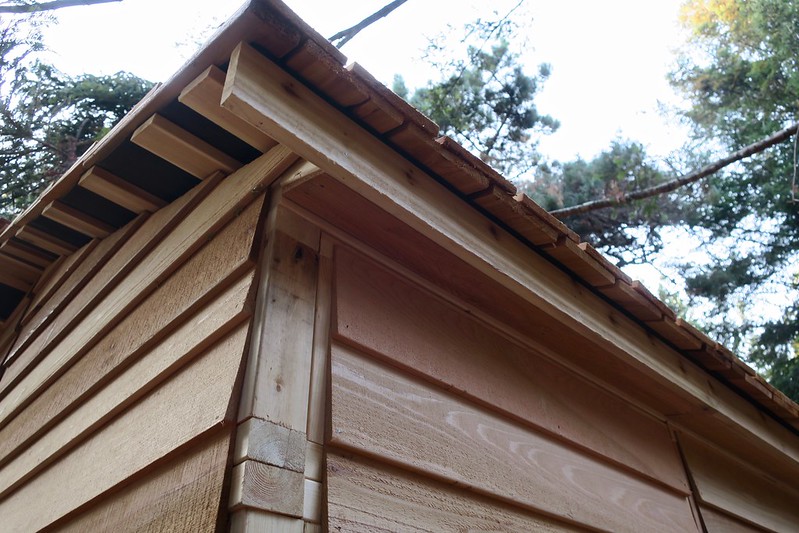Learning how to restore water damaged soffit independently is an essential thing you can use during house repairs. It can help you lessen the costs of hiring professionals to do the work for you.
Soffit is a cladding material beneath the house’s eaves. It aims to protect the rafters from debris, moisture, and other environmental factors that can produce mold and other damages.

However, these soffits can get damaged as time passes. Read this informative article to know how to deal with it!
How Do Soffits Get Damaged?
Soffits often get water damage due to prolonged water and sun exposure periods. They may also get physical damages because of several freezes and thaw cycles during cold climates.
Aside from that, soffits may crumble over time due to winds, storms, moisture, and humid air. However, it is best to be careful of this matter because there can be instances where a water damaged soffit exists even before you buy your house.
If that happens, here is an article about, “what if I buy water damaged house without knowing” to help you.
Why Should You Not Ignore A Water Damaged Soffit?
Water damage on soffits can lead to further structural complications. Listed below are some examples.
1. Mold
Moisture and water damage on soffits can lead to mild or severe mold growth. It can result in roof deterioration when left unchecked and unrepaired.
Additionally, mold growth is also a health hazard. It can be dangerous to sick and allergic people when inhaled or touched.
2. Roof rot
Moisture and water damage can also penetrate the roof’s edges through the exposed rafter tails. It can rot the wooden framing, leading to more severe structural damage.
3. Pest infestations
Soffits no longer give you a sealed barrier against pest intrusions once it gets water damaged. Several pests can gain entrance into your ceilings or roofs, which can cause further complications.
Unluckily, these pest intrusions can become unnoticed until they deteriorate your home structures. In this case, monitoring this issue is advisable to prevent damages.
How Do You Restore Your Water Damaged Soffit?
Once you have noticed these damages stated above, it is best to immediately replace the water damaged soffit. Here are the steps to doing so!
Step #1. Remove the shingle molding
Wear your protective or safety glasses before anything else. Get a flat bar and use it to slide under the molding between the shingles and the vertical fascia board.
Pull off the shingle molding carefully. If you do not damage it, you can set it aside to reinstall later.
On the other hand, consider replacing the shingle molding if there are damages.
Step #2. Pull off the fascia boards
Remove the fascia board from the rafter’s end. Replace it later if there is damage and rots.
Step #3. Unfasten the old and water damaged soffit
Remove the water damaged soffit by sliding it out of the molding. Hold it horizontally against the house.
Remove the nails using the flat bar if they hold it in place on the rafter tails or molding.
Step #4. Remove the rafter
Check the rafter carefully if there are signs of rotting. If you see some, use a circular saw to cut the water damaged areas.
After that, cut lumber from pressure-treated lumber using your circular saw. You can use this as your replacement rafter later.
Step #5. Attach the new rafter
Get a piece of lumber and cut it 1-inch wide. Ensure that it is 8 inches longer than the replacement rafter you did earlier.
Hold the replacement rafter in position and place the lumber behind it. Extend its ends on either side behind the replacement rafter.
After that, secure them using wood clamps. Insert screws into the boards, hold them to the rafters, and attach them properly.
Step #6. Prepare the new soffit
Get a thin hardboard and cut a replacement soffit. Coat it with a wood sealer or primer and let it dry.
Step #7. Get a new fascia board ready
Measure and cut a new fascia board with the same thickness as your old one. Coat it also with a primer or sealer and let it dry.
Step #8. Attach the new soffit
Put the replacement soffit back to the eave’s underside. Use 6d nails to fasten it properly.
Step #9. Put on the new fascia board and shingle molding
Use 6d nails to reattach the fascia board. Set the nails securely and putty the holes.
After that, fasten the shingle molding on top of the fascia after the putty becomes dry.
Step #10. Check for possible water leaks
Examine the fascia board and soffits if there are water leaks behind them. If you see some leakage, stop it by using paintable caulkings.
Step #11. Paint!
Lastly, paint them with your desired color. Let it dry and put on the second coat.
Conclusion
Knowing how to restore water damaged soffit can reduce labor costs. However, you still need to prepare an adequate budget for the repairing process.
If you are still unaware of how much to prepare, check this article about how much to repair water damaged soffit. Once you have understood everything, you are off to a good start!
